Sony PlayStation
Top 10 Best Sony PlayStation Games of All Time!
In 1988, Sony began working with Nintendo to develop a CD-ROM add-on for the upcoming Super Famicom/Super Nintendo. Contract disputes put a sudden end to the arrangement, so Sony decided to enter the console market on their own. Nintendo’s refusal to embrace optical media and Sega’s self-destruction opened the door for Sony to climb to the top of the market. Sony made their platform very inviting to publishers, and major third-parties lined up to support them. Securing the Final Fantasy and Dragon Quest franchises made the PlayStation the console of choice for most Japanese gamers. The PlayStation reshaped the entire industry and became the first console to reach sales of 100 million. With over 2,000 games released for the system, the PlayStation had one of the most well-rounded libraries of any console ever.
10
Suikoden II
1998
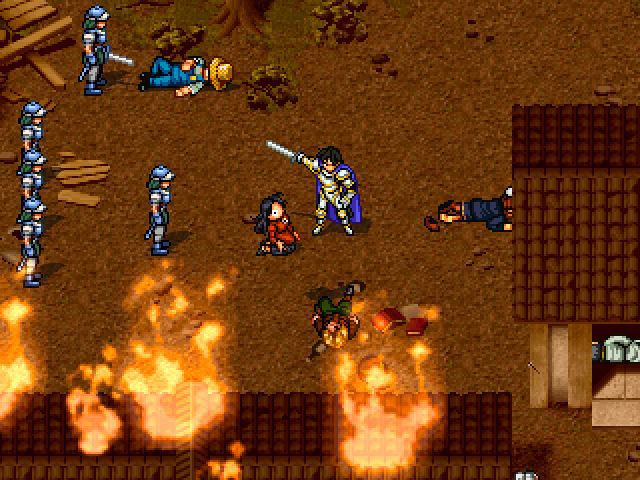
Suikoden is loosely based on the classic Chinese novel Water Margin in which 108 “Stars of Destiny” come together to rise up against an oppressive Empire. The main draw of the game is the ability to recruit up to 108 members to your party. Much in the same way that the water margin remains level regardless of the underlying topography, your party members in Suikoden are treated as equals despite their varying skills and abilities. The basic concept is that everyone will contribute where they can, and the entire group will reap the benefits. Not only will your recruits participate in battle, but their specialized skills also help the development of your party in other ways. Once recruited, blacksmiths will sharpen your weapons, engineers will modify your headquarters, and various merchants will open up shop in your fort. Standard battles support up to six characters at one time, and special combo attacks become available depending on which characters you have in your party at any given time. In addition to the traditional turn-based battles, Suikoden features large-scale battles in which you lead your entire army into war. Suikoden II is a direct sequel that looks, plays, and feels like its predecessor. I’m recognizing the sequel here due to refinements to the massive battles, a new inventory system, the inclusion of several mini-games, and a much appreciated dash button. Also, Luca Blight is one of the most sick and twisted villains to ever appear in a video game.
9
Chrono Cross
1999
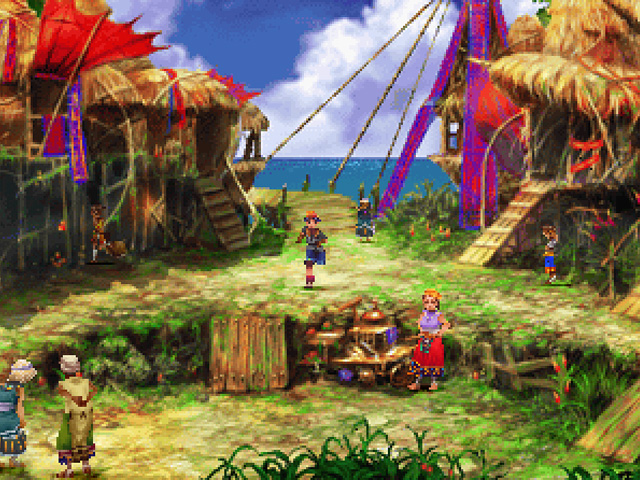
In an effort to be more accessible to a greater number of people, Chrono Cross tries to distance itself from typical RPGs. There are no random battles to speak of, and it’s possible to completely avoid most of the enemies altogether. Moreover, the lack of a real experience system adds little incentive to bother with the battles in the first place. The ironic thing is that the battle system is actually intriguing (albeit a little easy to master) and I wouldn’t have even minded being forced into them. Players won’t have to spend much time grinding or earning experience points, but the game finds other ways to keep them busy. For instance, the game features an impressive roster of 45 party members to recruit. Many of these party members are one-dimensional, but the real fun is in convincing them to join you in the first place. It’s not possible to recruit all of them in a single game, so there is incentive to replay through the adventure. Chrono Cross boasts some of the most impressive visuals on the system, and the vibrant colors and detailed character models really stand out. The soundtrack is amazing too. Like its predecessor, the main draw in Chrono Cross is its compelling story. Taking place in two parallel universes, Chrono Cross questions what role fate plays in our lives and how choices we make can have great consequences on the entire world. Perhaps the best aspect of the game is its enigmatic plot twists which keep you guessing until the very end. The game had some very big shoes to fill, but Chrono Cross was a worthy sequel to Chrono Trigger and one of the best reasons to own a PlayStation.
8
Metal Gear Solid
1998
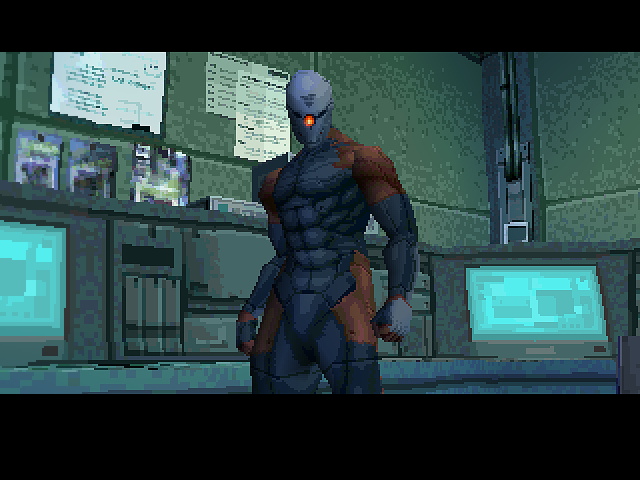
Metal Gear Solid stays close to the foundation of the original MSX titles, but brings the series to a whole new level with its Hollywood-level production values. Unlike most action games, Metal Gear Solid is designed in a way that actively encourages players to avoid combat whenever possible. In order to avoid being spotted, you’ll crawl through ventilation ducts, disable cameras with chaff grenades, and sneak around in cardboard boxes. This is not to say there is no action though, as you will still have access to an assortment of weapons – ranging from handguns to remote controlled missiles. You even get to use a number of basic items in creative ways. For instance, cigarette smoke can detect infrared lasers and ketchup can be used as fake blood to trick guards. Cinematics play a huge role in Metal Gear Solid, and the gritty visuals, dynamic camera angles, and stellar voice work help create a convincing virtual world. The plot borders on the ridiculous, but the characters are well-developed and extremely memorable. The game isn’t particularly lengthy or difficult, but it’s full of hidden details. The game’s outstanding training mode is also worth mentioning, and it was complex enough to spawn a separate expansion game. Without question, Metal Gear Solid is one of the most ambitious and creative games of its generation.
7
Resident Evil 2
1998
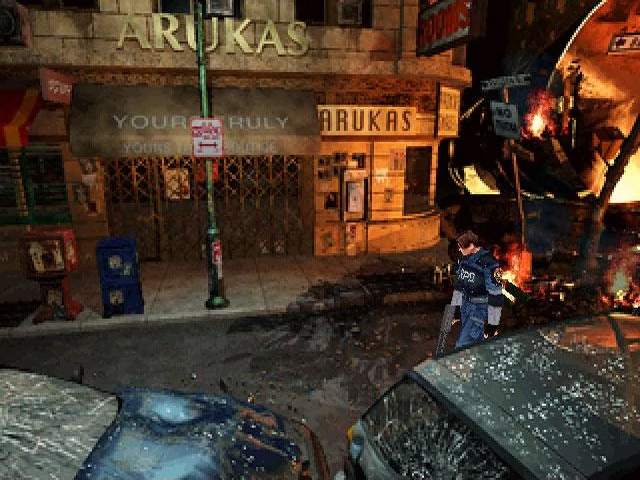
The original Resident Evil was an instant classic that helped define the survivor/horror genre. Capcom took great care with the sequel and even ended up scrapping a near-completed prototype just to ensure that the sequel would deliver. In the end, their tremendous efforts paid off. Resident Evil 2 has much in common with its predecessor. Fixed camera angles and limited ammunition help build suspense as the protagonists explore a facility infested with zombies. The game has a lot more content that the first Resident Evil, however. There are two characters to choose from initially, and each has multiple scenarios to complete. Resident Evil 2 is a much prettier game than the first one. The improved animation is especially noticeable, and realistic body language adds to the drama. The improved graphics engine also allows for more zombies to fight and larger bosses to topple. Because you’ll usually want to avoid conflict altogether, the extra enemies serve to create a heightened sense of fear. The true genius of the game is in its pacing. You’ll exercise great caution every time you open a new door and will worry about what might be waiting for you around each and every corner. In the one moment you decide to relax, the game will scare the shit out of you. Capcom did such a great job at controlling the flow of the game that they knew precisely when they could catch players with their guard down. All three Resident Evil games on the PlayStation were excellent, but none got the heart pumping quite like Resident Evil 2.
6
Tekken 3
1998
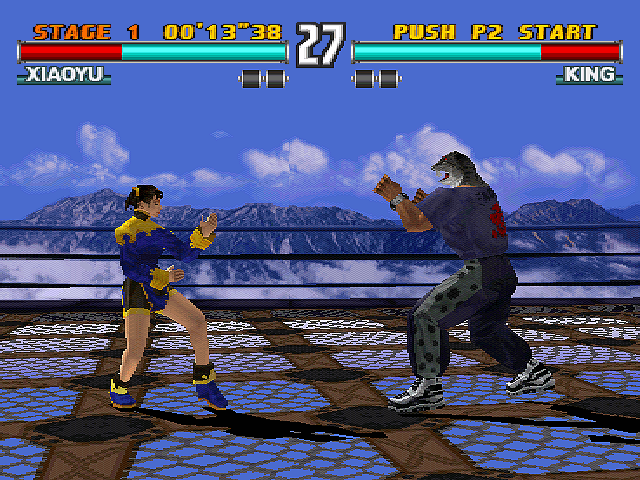
While many fighting games allow you to jump around like superheroes and shoot fireballs across the screen, the Tekken series has always been centered around hand-to-hand combat. The third entry in the series featured the same fast-paced, combo-heavy gameplay that everyone expected and added a few refinements of its own. The overall mobility of the fighters was improved and the new sidestep ability added more depth to the gameplay. Eight characters from previous Tekken games returned and were joined by over a dozen new faces. These fighters represented a wide variety of fighting styles, including Kung Fu, kickboxing, professional wrestling, and Brazilian Capoeira. Meanwhile, ridiculous characters like giant pandas and wooden training dummies provided comic relief and added even more variety. Not only did each character have their own unique fighting style, but they also had compelling backstories and entertaining endings. Although Tekken 3 pushed the PlayStation to its limit, the graphics had to be downgraded slightly from the arcade original. To make up for this, Namco included several new modes, a couple of mindless minigames, and two new bonus characters not seen in the arcade. A better version of Tekken 3 would not be possible on the PlayStation.
5
Tomba!
1998
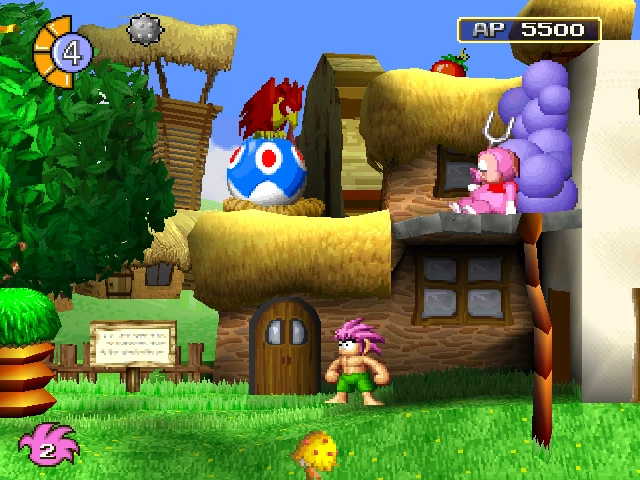
With games like Resident Evil 2, Gran Turismo, Tekken 3, and Metal Gear Solid all hitting store shelves, 1998 was an awesome year for the PlayStation. Surprisingly though, the best PlayStation game of that year was an oft-overlooked title from a virtually unknown company. Tomba! is the brainchild of Tokuro Fujiwara – a man who worked on many of Capcom’s biggest titles, including Mega Man X, Strider, and Ghouls ‘n Ghosts. Even with this impressive resume, Fujiwara considers Tomba! to be his greatest achievement. Despite its whimsical appearance, Tomba! actually has more in common with Metroid than it does with Adventure Island. It provides a perfect balance of classic platforming and adventure elements, and a surprisingly deep mission system can be found behind the trippy atmosphere and colorful characters. With 130 mini-quests to complete, the diversity in Tomba! is nothing short of amazing. One minute you’re finding food for a hungry monkey, and the next you’re racing a go kart through a motocross course. Because these quests don’t have to be completed in a specific order (and some don’t have to be completed at all), players have a lot of freedom in how they choose to approach the game. The pacing in the game is downright brilliant and ensures players will always have a variety of directions they can go. Anyone not stuck in a “too cool for school” mentality will find an incredibly satisfying adventure in Tomba!
4
Final Fantasy IX
2000
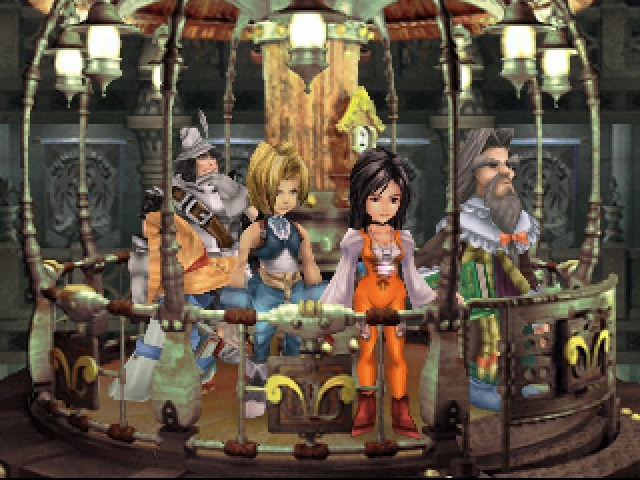
After Square ventured off the beaten path with Final Fantasy VIII, they brought the series back to its roots with the ninth installment. Final Fantasy IX still had slick production values and impressive CGI cutscenes, but it also marked the return of a traditional fantasy setting and classic Final Fantasy themes like castles, mages, and crystals. The core gameplay mechanics were reminiscent of older Final Fantasy games as well, and they borrowed as much from the classic SNES games as they did from the more recent PlayStation offerings. The game’s new “ability” system effectively revived the character class concept by designating certain abilities to specific characters. (For example, black magic can only be used by the black mage.) This system helped negate some of the more tedious micro-management aspects of the series and helped accentuate the individuality of the characters. Final Fantasy IX also saw the return of super-deformed characters. This might seem like a step back from the realistically-proportioned characters that were used in VII and VIII, but the inordinately large heads made it easy for the designers to highlight certain facial expressions and emotions. This is important, because Final Fantasy IX‘s greatest strength was its compelling characters. The plot was relatively linear, but the villains were intriguing and the roster was likable. Ultimately, its high production values, nostalgic themes, and charming characters make Final Fantasy IX an essential game for any RPG fan.
3
Street Fighter Alpha 3
1998
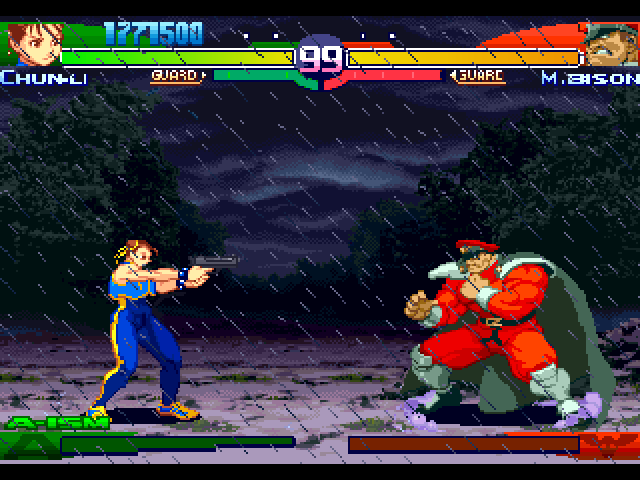
The Alpha games added a lot to the Street Fighter universe. The games adopted an anime-inspired art style, put more focus on storyline elements, and reintroduced several characters from the first Street Fighter and Final Fight. Beneath the surface, Alpha also featured a multi-tiered super combo gauge and introduced many new gameplay elements such as chain combos, Alpha counters, and air blocking. The third entry into this sub-series feels decidedly more balanced than the pervious Alpha games. This was largely because several measures were taken to discourage cheap tactics. Projectiles do less damage in relation to the distance they travel, super combos are generally weaker, throws are more difficult to perform, and the new guard meter promotes a more offensive style of play. Perhaps the most significant addition to Alpha 3 is the three selectable fighting styles (known as “isms”) available for each character. The PlayStation version is generally considered to be inferior to the Saturn and Dreamcast ports, but there’s no denying that Capcom pushed the PlayStation to its limits. Not only were nearly all the animations from the arcade faithfully recreated, but the game also featured an impressive roster of 34 fighters – including five characters that were not available in the arcade release. In addition to the usual “Arcade” and “Versus” modes, the PlayStation version also includes a comprehensive training mode and a robust “World Tour” mode that lets players earn new abilities by completing various challenges.
2
Final Fantasy VII
1997
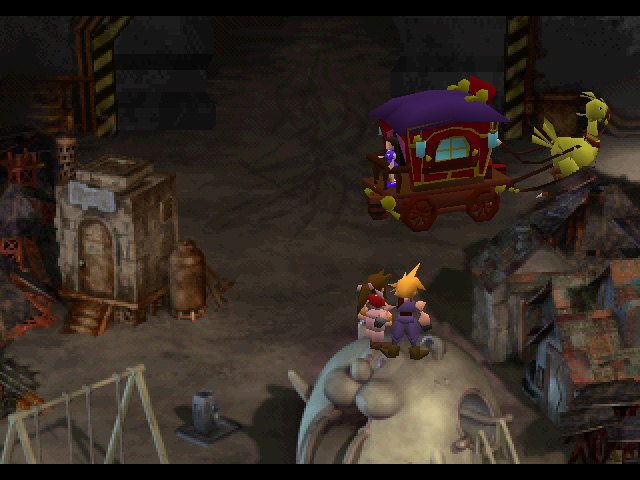
Final Fantasy VII influenced millions to jump aboard the PlayStation bandwagon and effectively launched RPGs into the mainstream. The production values were amazing, and you didn’t need to be an RPG fan to be impressed by the beautiful cutscenes or the dramatic summon spells. With only three characters to control at any given time, Final Fantasy VII feels more simplistic than its predecessors, but this also makes it one of the more accessible entries in the series. The game’s “materia” system makes it easy to assign unique skills and abilities to each of the characters, and the various mini-games and optional side quests help to ensure that the game never becomes too monotonous or repetitive. The compelling story contains love triangles, plot twists, and tragic inciting forces to motivate players throughout the entire adventure. Even though the game took many steps to reach new audiences, Final Fantasy VII never felt like it was outright abandoning seasoned RPG fanatics. Square even added optional bosses to provide a challenge for those who find the game too easy. Final Fantasy VII is the most successful game in the series and a masterpiece of the 32-bit era.
1
Castlevania: Symphony of the Night
1997
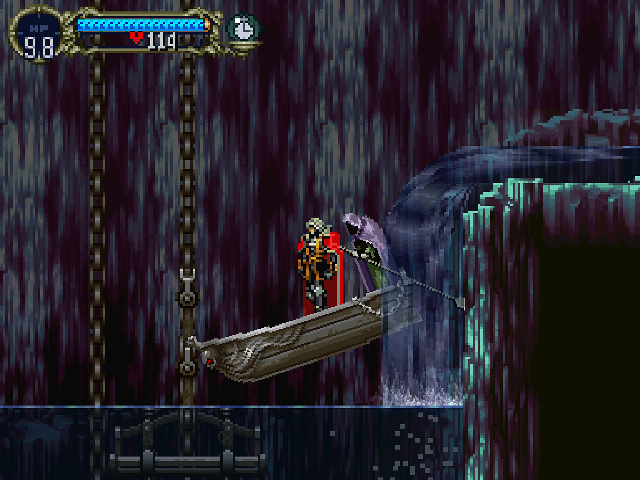
With Symphony of the Night, Konami decided to give the Castlevania series a major overhaul. Instead of a typical whip-wielding vampire hunter, players assume the role of Dracula’s son, Alucard. Alucard can use his vampire abilities to transform into a bat, wolf, or mist to gain access to certain areas. He’ll also have numerous spells at his disposal and several familiars to assist him. In short, the game mechanics are more varied than in previous Castlevania adventures and offer much more freedom. The level design is also more liberating, since gameplay now takes place in a series of inter-connected areas as opposed to a set of individual stages. The result is a game that feels as much like Super Metroid as it does Castlevania. Exploration is the foundation of the game, but the massive areas are crawling with enemies and peppered with dozens of memorable boss battles. In an era where so many companies were rushing blindly to make 3D games, Konami continued to improve upon the tried and true 2D formula. This resulted in a game that looks and plays better than nearly every other game on the PlayStation. The detail in the gothic environments is stunning, the variety in the characters is unmatched, and the silky-smooth animation is a true work of art. The music is equally brilliant, surpassing even the high expectations set by earlier Castlevania games. Finally, Symphony of the Night provides the most rewarding surprise since Zelda‘s “second quest,” and this unexpected twist turns the entire game upside down.

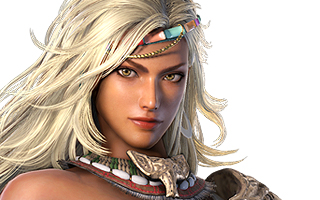
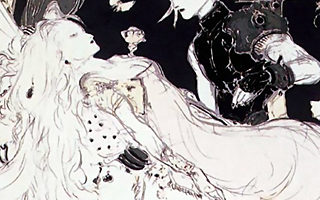
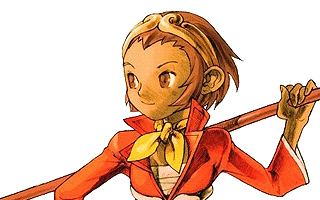
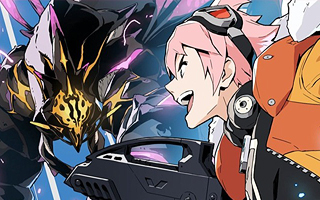
Do you agree with this list? Let us know what you think by leaving a comment below. Your opinion matters!